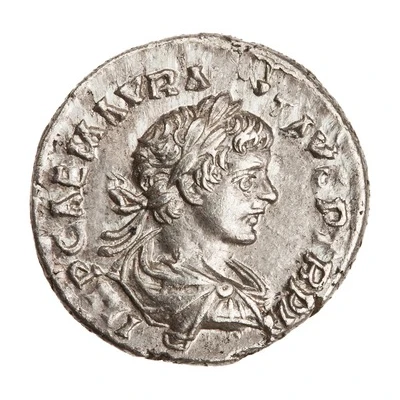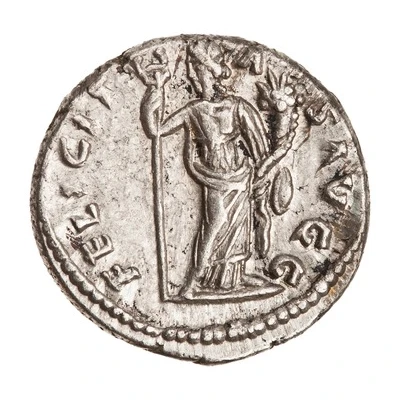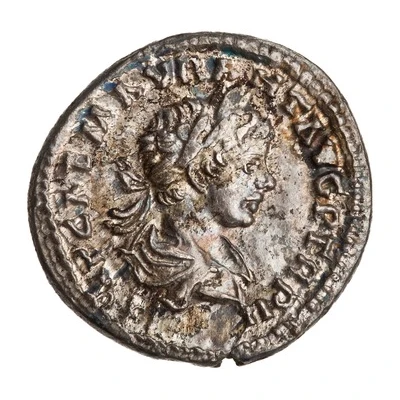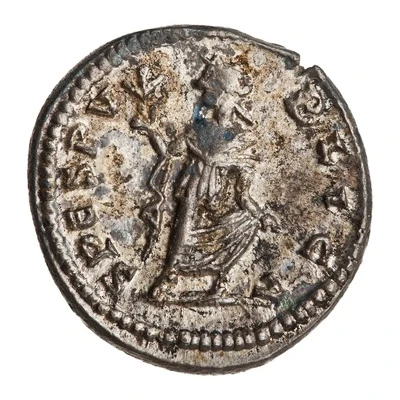Denarius - Caracalla MINER VICTRIX; Minerva and Victory
199 year| Silver | - | - |
| Issuer | Rome › Roman Empire (27 BC - 395 AD) |
|---|---|
| Emperor | Caracalla (Marcus Aurelius Antoninus Caracalla) (198-217) |
| Type | Standard circulation coin |
| Year | 199 |
| Value | 1 Denarius |
| Currency | Denarius, Reform of Augustus (27 BC – AD 215) |
| Composition | Silver |
| Shape | Round (irregular) |
| Technique | Hammered |
| Demonetized | Yes |
| Updated | 2024-10-05 |
| Numista | N#273596 |
|---|---|
| Rarity index | 100% |
Reverse
Minerva, helmeted, draped, standing left, holding Victory in extended right hand and spear in left hand; at feet, shield; behind, trophy.
Script: Latin
Lettering: MINER VICTRIX
Translation:
Minerva Victrix.
Minerva, the victorious.
Comment
Source:Online Coins of the Roman Empire (OCRE)
Interesting fact
The Denarius - Caracalla coin was minted during the reign of Emperor Caracalla, who ruled the Roman Empire from 211 to 217 AD. The coin's obverse side features an image of Caracalla's face, while the reverse side depicts Minerva, the Roman goddess of wisdom and war, standing next to Victory, holding a wreath and a spear. The coin's design was meant to symbolize the power and strength of the Roman Empire under Caracalla's rule. Interestingly, the Denarius - Caracalla coin was made of silver, which was a valuable and highly sought-after metal during ancient times. The use of silver in coinage was a sign of the Roman Empire's wealth and prosperity, and it helped to facilitate trade and commerce throughout the empire. Overall, the Denarius - Caracalla coin is a fascinating piece of history that provides a glimpse into the economic, political, and cultural practices of ancient Rome. Its design and materials reflect the values and beliefs of the Roman people during that time, and it remains a valuable artifact for historians and collectors today.



